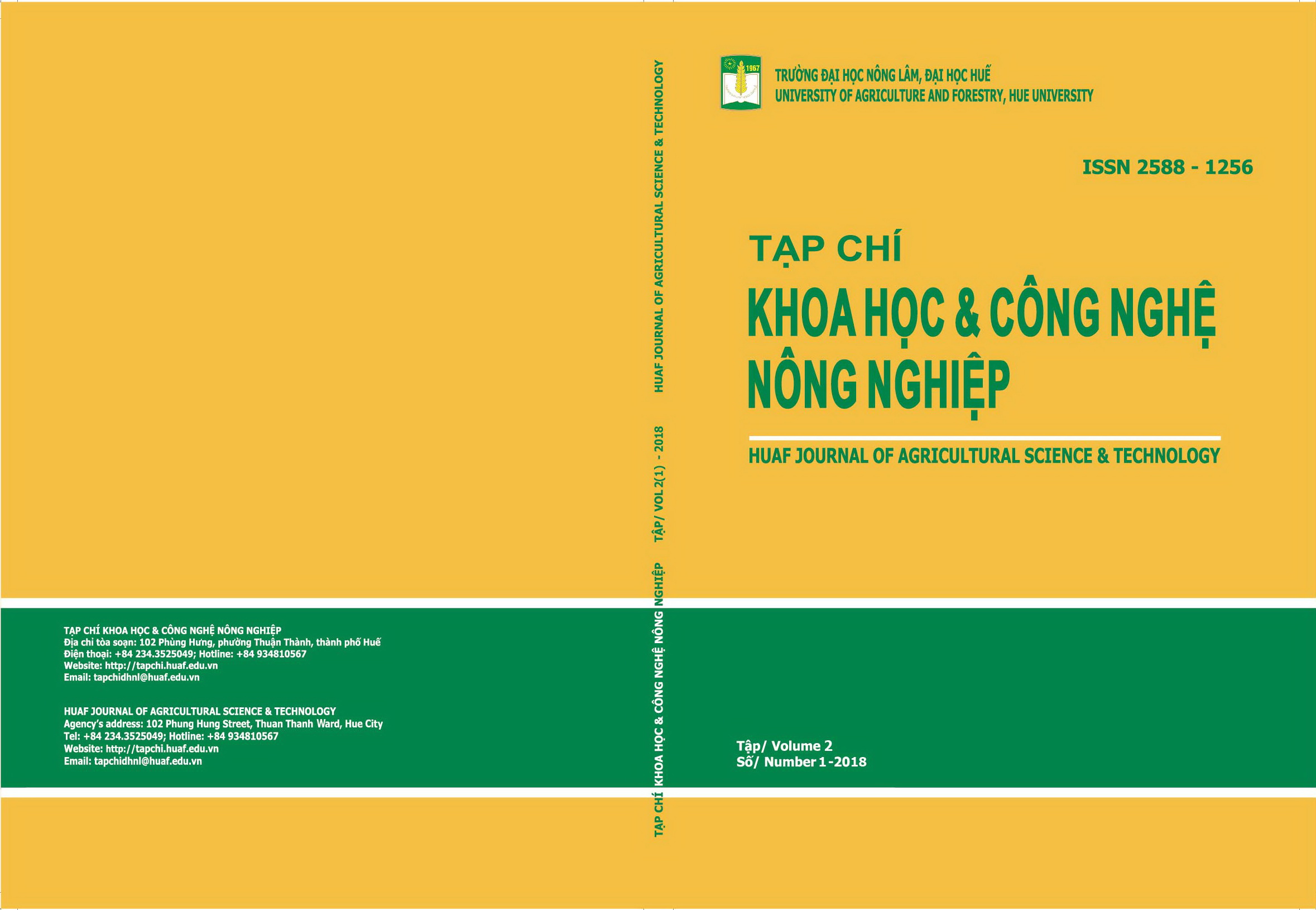##plugins.themes.huaf_theme.article.main##
Tóm tắt
Cỏ dại là một trong những dịch hại quan trọng nhất, tuy nhiên, chưa được quan tâm nghiên cứu và quản lý ở miền Trung nói chung và tỉnh Quảng Trị nói riêng. Nghiên cứu này nhằm mục đích xác định thực trạng cỏ dại hại lúa để có giải pháp nghiên cứu và biện pháp phòng trừ thích hợp. Kết quả điều tra trong các năm 2015 - 2016 cho thấy, thành phần cỏ dại trên đồng ruộng gồm 20 loài thuộc 10 họ như là cỏ lồng vực nước và cỏ đuôi phụng ở giai đoạn trước khi thu hoạch. Kết quả điều tra 90 hộ nông dân và 30 cán bộ quản lý cho thấy quy mô sản xuất lúa nhỏ (0,4 ha), phần lớn nông dân chưa áp dụng kỹ thuật canh tác và quản lý cỏ dại đúng theo khuyến cáo của cơ quan chuyên môn, trong đó vấn đề hạn chế nhất là chưa giữ đúng mực nước trong ruộng sau phun thuốc. Công tác trừ cỏ lúa chủ yếu sử dụng biện pháp hóa học mặc dù nông dân chưa thật sự nắm rõ kỹ thuật này, áp dụng 02 lần/vụ với hoạt chất pretilachlor. Việc phòng trừ cỏ dại bằng biện pháp này khó có thể trừ hết các loại cỏ với diện tích lớn. Các kết quả nghiên cứu là những phát hiện mới về cỏ dại và quản lý cỏ dại ở miền Trung và Quảng trị. Cần nghiên cứu về nguyên nhân phát triển trở lại của cỏ dại sau khi sử dụng thuốc trừ cỏ để giúp có biện pháp quản lý cỏ dại lúa tốt hơn.
SURVEY ON WEED AND WEED MANAGEMENT IN RICE AT QUANG TRI PROVINCE
ABSTRACT
Weed is one of the most important pests in Central Region of Vietnam in general and Quang Tri province in particular. However, the research on weed management has not been paid much attention. This research aims to identify the weed situation at the research sites to have solutions for weed control and management in the upcoming time. Results from the survey in 2015 - 2016 show that most of the weed cover the fields consisted of 20 species belonging to 10 families such as barnyard grass and red sprangletop in the pre-harvest stage. The survey of 90 farmers and 30 managers shows that the scale of small rice production (0.4 ha). Farmers have not applied weed management by herbicide in accordance with the recommendations of specialized agencies, in which the most limited issue was to keep the right water level in the field after spraying. Herbicides such as pretilachlor was mainly applied twice per crop. Farmers have not yet grasped the technique and strictly comply with the requirements of weed control by chemical methods. Weed control by chemical methods was difficult to eliminate all types of grass with large area. The causes that weeds grow after use of herbicides should be studied to manage weed in rice field better.


